SUP Introduction
SUP (Stand Up Paddleboarding) is one of the fastest growing water sport in the world. You just stand on something like a bigger surfboard and move across the water by using a paddle. First time standing on a SUP board is, by far, an overwhelming feeling for most of people. From the first minute, you just feel like a real surfer, belonging to the great community of surfers around the world. It doesn`t really matter if you live on Maui / Hawaii, or are paddling on a small local lake in Europe. It's just pure surfers' lifestyle feeling. On the technical scale, SUP is one of the easiest and least technically complicated water sports. You can have your own tempo and challenges, paddling just for relax, or paddling for fitness. However, to get most fun out of it, you should have some basic insight about the equipment. So here we go!
Hard Core (Solid) or Air Inflatable SUP Boards?
When choosing your new SUP board, first thing you should do is to decide which construction would you prefer. There are two main constructions on the market: hard boards - made of polystyrene core coated with a composite laminate (similar to traditional windsurfing or surfing boards) and inflatable - hull filled with a heavily compressed air.
- Hard Core Boards (Solid) - are faster, more stable on choppy water, less prone to drift in stronger winds and are better for surfing waves or flat water races. Unfortunately they are quite big so storage and transportation can be cumbersome. And they really don’t like hitting any hard objects.
- Air Inflatable Boards - you can store them rolled in a backpack. They do not take up much space either at home or during a travel. Their shape is formed by compressed air, usually about 15 psi (1 bar). When pumped, they offer enough rigidly and stiffness for recreational paddling. Knocks and bumps are no problem for them, but higher performance or ultimate stability can’t be taken as their strongest points. Also - because of their bigger rails inflatable boards are more prone to drift off course during a windy day.
SUP Shapes
SUP boards can be divided by a few types of shapes. The most popular are:
- Race boards - very long (usually above 380 cm) and slim (up to 76 cm wide). Made for reaching maximum speed and directional traction. Very fast but less stable and hard to maneuver. Rather only for experienced surfers.
- Touring boards - a little shorter than race boards (usually up to 360 cm), but a few centimeters wider. Great for long distance paddling on flat water. They are fast, offer better stability and are slightly more maneuverable.
- All-round boards - the most versatile boards on the market. Much shorter and wider than previous ones, therefore significantly easier and user-friendly to paddle. Their average length is about 300-320 cm and width spans from 76 to 86 cm. All-round boards offer maximum stability and agile maneuverability. Can be used for sup trips, playing around the beach or surfing on smaller waves. Speed and tracking are rather average.
- Surf boards - the smallest boards in the pack. Dedicated for one main purpose - riding waves. Usually they are very short, but some models can be as big as all-round boards. Those are the slowest sups on the water, their tracking is not phenomenal and generally those surf boards are very unstable, especially under heavier surfers.

SUP Sizes
When choosing your SUP board you should keep two main parameters in mind: volume and width. Lighter persons (up to 70 kg) can take a board around 200 liters of volume. The closer your weight gets to about 90 kg, the more you should look for boards around 300 liters (and bigger). Your first SUP definitely shouldn’t be too narrow. Here are examples of „safe” widths for given surfers weights:
| SURFER WEIGHTS | BOARD WIDTH | |||||||
|---|---|---|---|---|---|---|---|---|
| 74 cm | 76 cm | 78 cm | 80 cm | 82 cm | 84 cm | 86 cm | 88 cm | |
| < 70 kg | ● | ● | ● | |||||
| 70-85 kg | ● | ● | ● | |||||
| 85-95 kg | ● | ● | ● | |||||
| > 95 kg | ● | ● | ● | |||||
Even if the length of a board is not as much important as those two previous parameters, it gives your SUP board some special character. Generally the longer the sup, the faster and lighter it glides through the water. Shorter boards are more maneuverable.
SUP Fins
Most boards on the market are equipped with one or three fins. Sups with only one fin are generally dedicated to longer courses (race, touring, some all-round models). Three fins on the tail usually mean more surf oriented character.
SUP Leashes
Every SUP board has a small metal ring installed onto deck at the tail area. This is your mount for a leash - a line that connects the board to your leg. It prevents your SUP from drifting away after you fall into the water. Leash is a must have when you go surfing on waves, but even on flatter waters it makes paddling safer.
There are two types of leashes: regular cord and a coil („telephone line”). Regular leash is always stretched and less prone to tangle under your feet. This is because it usually lies outside a board in the water, therefore increasing the drag. Coil leash extends only after you fall from the board, so it doesn’t create a drag, but you can step on it when moving around the deck. Coil leash is more often recommended for race, touring and all-round boards. For surf SUPs a regular one seems more practical.

SUP Paddles
A paddle is your engine. Finding the right paddle is as important as choosing the right board, or even more important, especially for long paddling. There are a few construction types and a few shapes.
In terms of used material, we can divide paddles into:
- Aluminum - heavier but nicely stiff. This is the most economic option.
- Epoxy - lighter than aluminum but less stiff
- Carbon-composite - affordable, stiff and responsive paddle at good price.
- Carbon - the lightest, stiffest and most performance oriented. As well as the most expensive.
As for paddles, the most important parameter is their stiffness. It determines how much of our paddling power turns into movement or goes away due to flex of the shaft. Lightness of a paddle is also very desired, but it plays a secondary role.
Another classification is related to a type of construction:

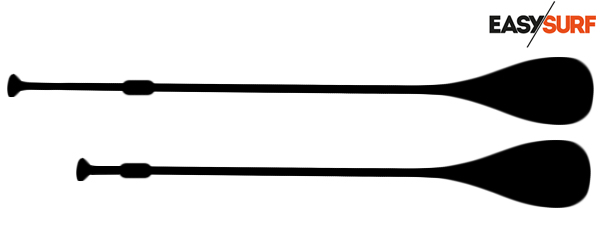

The last dividing factor is a shape of the blade:
- Bigger (wider) blade - more powerful but requires more energy during paddling. Recommended for adults and surfing on waves.
- Smaller blade - generates less power but is easier to paddle. Good for lighter persons.
- Narrow blade - higher aspect shape, with less width at the base. It generates good power but doesn’t force you to make a greater effort. Preferred for races.
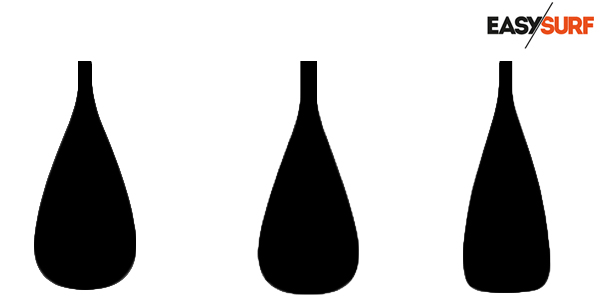
Ok, but which paddle should I choose?
Foremost you should get it right for your height. The easiest method of finding a proper length of the paddle is to add about 20-25 cm to your height. For a first-time-paddle buyer it will be useful to choose the regulated one. It will make finding the right length much easier. Usually you find the best setting after a few hours on water, so a fixed one would not be helpful. Type of construction and shape is usually determined by your wallet and the type of paddling you are interested in. For starters, it won’t be far from a good decision if you choose adjustable aluminum paddle with bigger blade (for adults) or smaller blade (for children).
The End Note
Should you have any more questions or need further consultancy, don't hesitate to contact us at our Customer Care section.
EASY / SURF Team
Blog
Read
Bigger days, smoother shopping: 2025 at EASY-surfshop! Event highlights, new brands and the improvements behind the scenes.
READ MOREWatch ▶️
Maciek Rutkowski shredding Australian waves!
Maciek Rutkowski swaps racing gear for his wave setup in Australia. Nice conditions, clean lines and wave riding! Pure windsurfing fun!
READ MOREWatch ▶️
King of the Bay 2025 – Aftermovie!
Garnier King of the Bay 2025 didn't dissapoint. So sit back and enjot this official aftermovie!
READ MORE












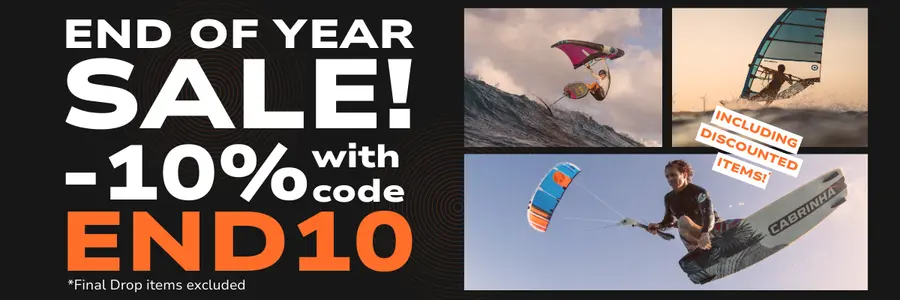

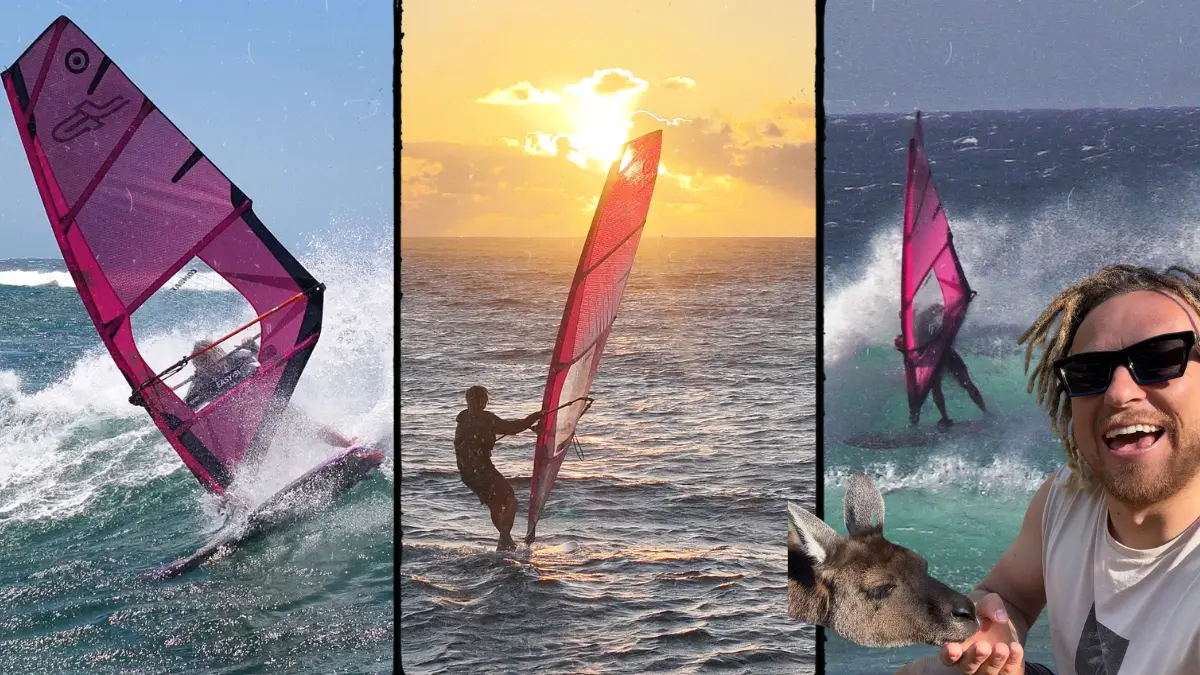
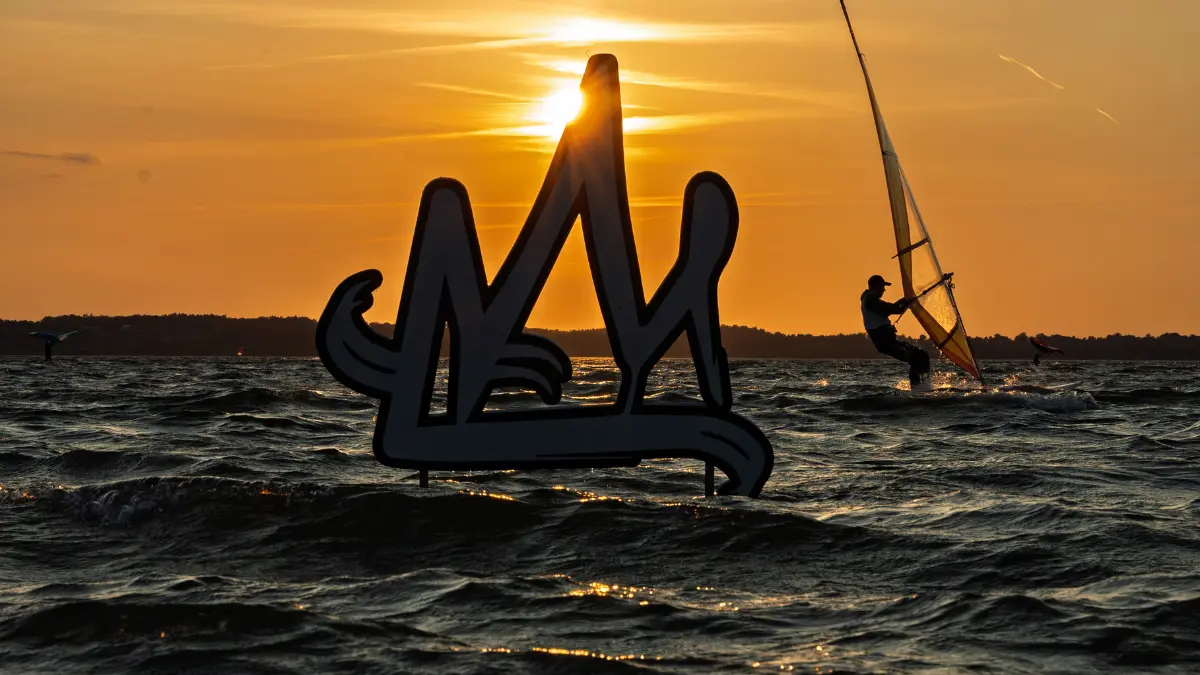



 Facebook
Facebook Instagram
Instagram YouTube
YouTube